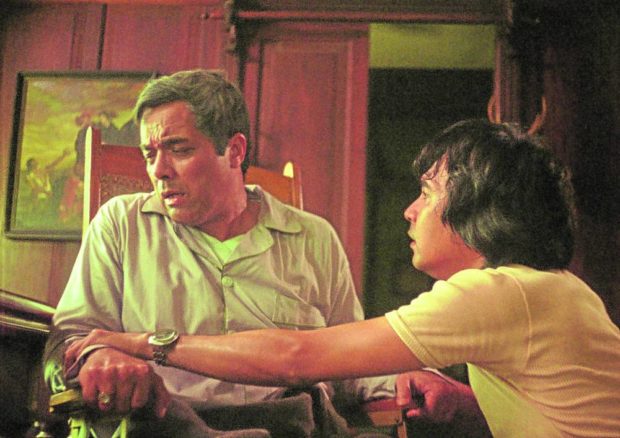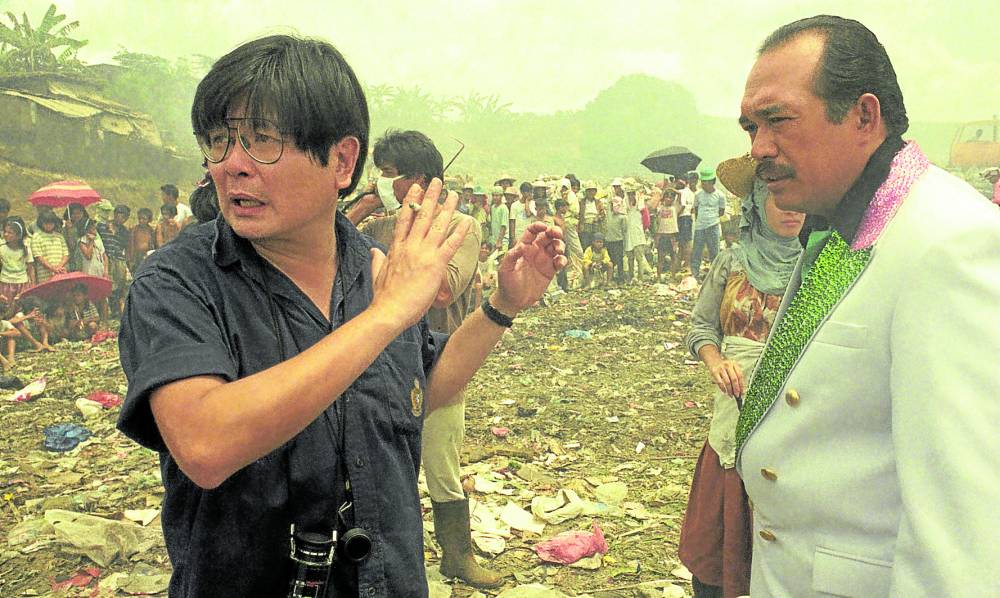Imagine writing a scholarly paper on one of the greatest but most inaccessible living Filipino filmmakers, and a couple of years later, you not only get to meet him, but you help guide him in writing his memoir.
This is exactly what happened to University of the Philippines (UP) professor-film scholar Patrick F. Campos.
In 2016, the UP Press published his book “The End of National Cinema: Filipino Film at the Turn of the Century.” He devoted one chapter, titled “Looming Over the Nation: Locating Mike de Leon in Philippine Cinema,” to the director, with almost a hundred pages discussing De Leon’s filmography and as “hero of the mythic golden age of national cinema.”
Campos told Lifestyle he started conceptualizing the book the year De Leon came out with “Bayaning Third World” (1999) and decided to retire from filmmaking for the next 17 years.
When Campos was doing his chapter on De Leon, his main photo researcher was the director’s longtime collaborator and their common friend, production designer and filmmaker Cesar Hernando. In 2017, when Campos was already a professor, Hernando was a cofaculty member at UP Diliman. In the same year, De Leon began shooting “Citizen Jake.” On the set, Hernando gave De Leon a copy of Campos’ book. When Campos saw the movie in 2018, he was surprised to see his book in one of the scenes, on “Jake Herrera’s shelf.”
Rare opportunity
To make a long story short, they met, and before the COVID-19 pandemic sent everyone cocooning in their homes, Campos found himself, first, suggesting that De Leon write his memoir, and eventually working with him throughout the process and editing it.
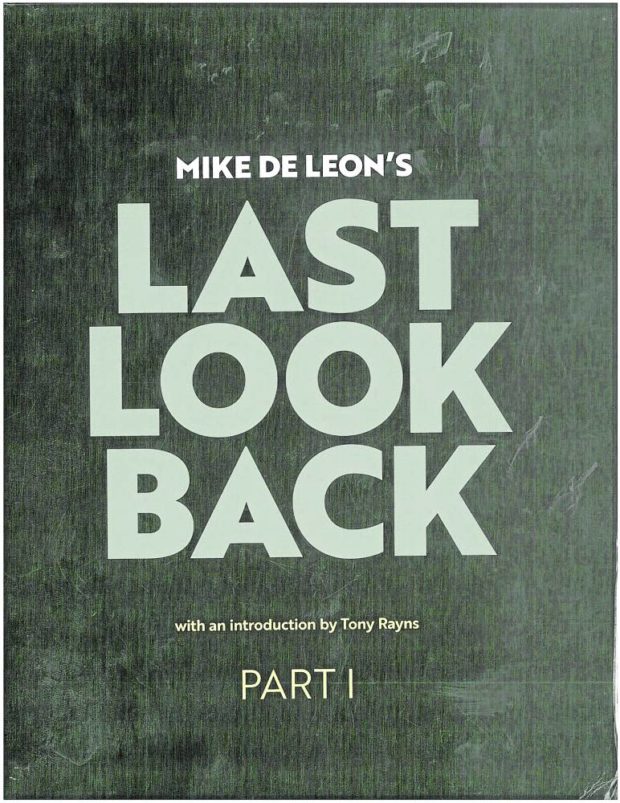
Part 1 of the massive two-volume memoir
“It’s a rare opportunity and a memorable experience to collaborate with Mike on a project unlike anything he has ever done before, and witness up close his creative process and labor of remembering,” Campos said. “From the seed of idea for me to write an essay to this massive memoir that the artist himself wrote, that’s a tremendous leap. I’ve always wanted to interview him for my research, and am thankful we have this part-film historiographic, part-autobiographic book instead,” he added.
Now after nearly four years, the 672-page, two-volume photographic memoir titled “Mike de Leon’s Last Look Back” is off the press, with Campos credited as editor. De Leon directed 10 feature films, the 28-minute “Aliwan Paradise” and the 38-minute historical documentary “Signos” that film scholars, critics and cinephiles here and abroad hail as classics, if not gems of world cinema.
Recent proof are the retrospectives this November at the New York Museum of Modern Art and the Three Continents Festival in Nantes City in France.
Written like film
“They’re thick and heavy,” De Leon said of the slipcase-protected memoir.
True enough, nearly an hour into reading Part 1 (Book 1), the cheap wooden bookstand we bought from a local bookstore collapsed. It couldn’t handle the weight and broke just like that.
To think, the second book or Part II is thicker and heavier. But it’s a happy reminder, after all. De Leon’s visual memoir is literally thick and heavy with recollections and insights that his followers have been wanting to know and learn from.
“Last Look Back” covers his growing up years as scion of the owners of LVN Pictures, one of the biggest film producers in the country during the studio era (1930s to 1960s).
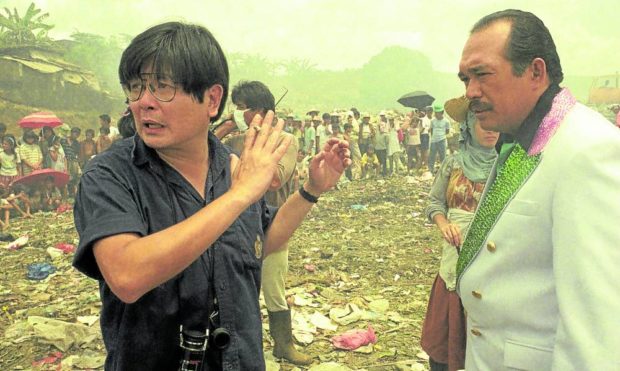
We learn how De Leon lived like a reluctant prince in a kingdom full of celebrities, studying art and traveling around Europe during his college years, and how he came back to work for LVN.
Film historians consider the 1950s up to mid-1960s the first Golden Age of Philippine Cinema, bookended by Manuel Conde’s “Genghis Khan” in 1950 and Lamberto Avellana’s “A Portrait of the Artist as Filipino” in 1965.
It was a time when LVN Pictures came up with prestige films that were not necessarily money-makers but award-winning, critically acclaimed works. Among them are the gothic love story “Mutya Ng Pasig” by Richard Abelardo, the classic social realist “Anak Dalita” (1956) and historical romance “Badjao” (1957), both by Avellana, the family dramas “Biyaya Ng Lupa” (1959) by Manuel Silos and “Malvarosa” (1958) by Gregorio Fernandez.
In his book, De Leon gives us a personal tour of that era and how those films made an impact on him as a storyteller. For example, he saw the parallelism in “Mutya ng Pasig” and his first feature, the ghost story “Itim” (1976).
In his speech for the MoMA, De Leon said, “I don’t think it’s presumptuous to say that my cinematic pedigree (to borrow a term from dog breeding in my dog breeding days) goes back to my grandmother’s and father’s legacy and their films that remain close to my heart. That is the only way I know to express this emotional continuum that runs deeply through every one of the films I produced, photographed, cowrote and directed.
“In compiling materials for the book and revisiting these LVN classics in a way for the last time, I discovered some uncanny parallels between some LVN films and mine, particularly ‘Mutya ng Pasig’ and ‘Itim’: a few plot elements, visuals and themes.”

He added, “Such similarities and connections could not have resulted merely from my early immersion in movies. They come from somewhere deeper—through the bloodline. As I say in the book, ‘Biologically, I owe my life to Lola/Grandma Sisang and my parents Manuel and Imelda. But as for my life in cinema, I owe it all to LVN.’”
What’s wonderful is that many of the LVN films mentioned in the book have been made available on Casa Grande Vintage Filipino Cinema, the Facebook page that De Leon has been curating and moderating since 2017. It has links to his Vimeo account and YouTube channel, both named “Citizen Jake,” where more than a hundred digitized LVN titles have been uploaded for free. New titles continued to be posted.
Living film master
While reading “Last Look Back,” those who aren’t familiar with some LVN films he’s discussing can just search the page and binge-watch.
In the book are De Leon’s insights on crucial events in history, especially after the declaration of martial law in 1972 when he was detained and interrogated overnight at a military camp up to his photographing the rallies in the 1986 Edsa People’s Power Revolution.
Film scholars and historians consider 1975 the start of second golden age of Philippine cinema, with National Artist Lino Brocka’s “Maynila, Sa Mga Kuko Ng Liwanag” (Manila in the Claws of Light),” which was produced and photographed by De Leon, and ended with Brocka’s last few noncommercial films before he died on May 22, 1991.
Engaging with the writings of earlier critics like Joel David, Nestor Torre and National Artist Bienvenido Lumbera, among others, Campos described De Leon as the only living film master who helped define that period.
Among the torchbearers of the second golden age, De Leon is the only one who lived long enough and had the time to write his own memoir. Biographies of Ishmael Bernal and Brocka were published posthumously and written by others.
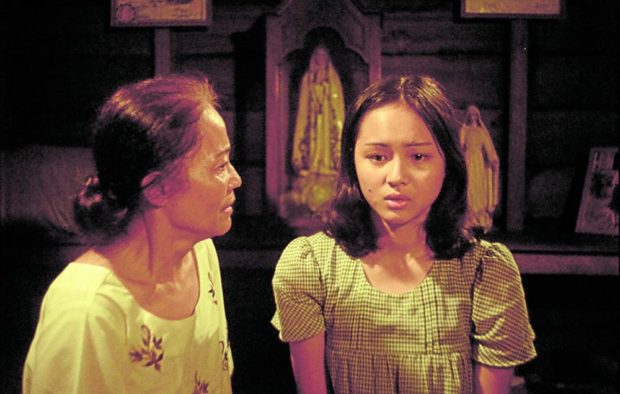
Readers will get an in-depth look at De Leon’s creative process. It’s like sitting in a masterclass with De Leon as the only teacher.
De Leon explained, “I decided I wouldn’t write a conventional autobiography or an academic treatise but a photographic memoir, a casual summation of my life’s work, an informal discussion of the films I worked on from ‘Maynila, Sa Mga Kuko Ng Liwanag’ (1975) to the two short political videos, ‘Kangkungan (Swamp Cabbage Path)’ and ‘Mr. Li’ (both in 2019).”
De Leon dedicates the book to Hernando, who died on May 8, 2019.
“Last Look Back” is here not only for scholars, academicians, cineastes and cinephiles but lovers of good stories to enjoy, written in elegant words spliced with—as Campos described—De Leon’s “wry humor” common in his films. Reading it with the help of a strong book stand is also highly recommended. —CONTRIBUTED INQ
Priced at P5,000, “Mike de Leon’s Last Look Back” will be sold online starting Dec. 1. Orders can be placed via tel. +63945-2807893; email [email protected].
